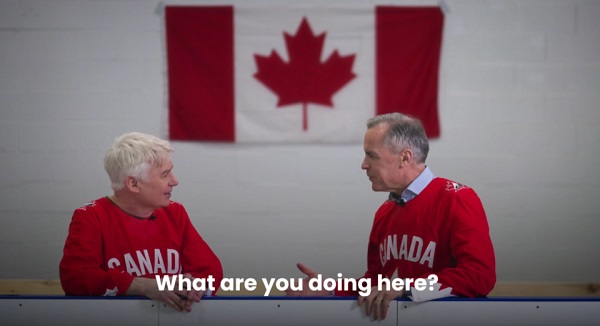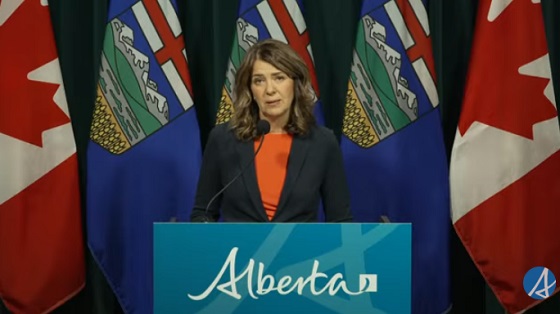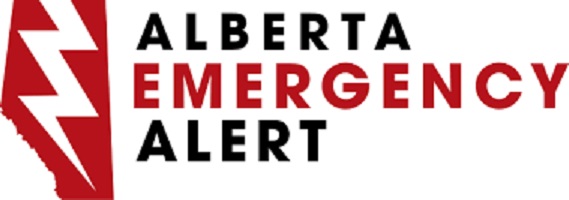Travel
Turks and Caicos – The Road Less Travelled

Turks and Caicos – The Road Less Travelled
I once had political aspirations. It was the early 1980s. A federal election was brewing. At the same time a tiny chain of British islands in the Caribbean – the Turks and Caicos – had expressed interest in forming an association with Canada.
What a great idea: Canada’s own warm, winter destination. No more currency exchange swindles or fighting with hefty American tourists in a Cancun buffet line-up; just a happy bunch of Canucks soaking up the sun in our own polite corner of tropical paradise.
I would make political hay by running for office on this simple, single platform: promoting a union between Canada and the Turks and Caicos. It seemed a worthwhile diversion from Alberta’s traditional campaign issues: complaining about Quebec and letting the eastern bastards freeze in the dark.
Alas, I didn’t run and my nascent political ambitions, like the election, came and went. The Turks and Caicos dream faded into the blue yonder; our Prime Minister went back to exclaiming “fuddle duddle” in Parliament and the West returned to detesting the East over trivial issues such as who was going to get Alberta’s gazillion petro dollars. And instead of milking the federal treasury I ended up in law school and eventually Red Deer where I practiced law for a quarter century before concluding that life was too short to spend behind a desk – even if it were in the corner office.
But some people follow through on that early opportunity to chart a different course. Bruce Twa, a law school buddy, had lawyered through a few cold Alberta winters when a chance phone call offered him the prospect of practicing warm-winter law – in the Turks and Caicos. Bruce jumped at the offer. He has now been resident in the “TCIs” for over twenty-five years, transacting real estate deals on behalf of wealthy, sophisticated, discreet clients – when he’s not boating in the azure-coloured waters or snorkeling amongst parrotfish and turtles in the coral reef surrounding the islands.
I had promised (threatened?) to visit Bruce on numerous occasions over the years. Finally, arrangements were made. We’d see the tropical paradise Canada had snubbed and find out how my naïve 1980s political ambitions may have panned out.
My wife Florence and I learned even before clearing customs at Providenciales airport that the TCIs still maintain a quaint “small-island” feel. Bruce and his wife Darlene had graciously offered to host us during our stay but the border guard wouldn’t allow us entry. We didn’t have Bruce’s home address. The officer shook his head many times, threatening us with expulsion, before calling in his superior.
She looked at our paperwork, “Oh, you staying with Bruce? I just give him a call and get his house number.” She dialled and five minutes later we were standing on the curb, throwing our stuff into Bruce’s pickup.
We had only four days in the TCIs; a wise use of time was paramount. I wanted to evaluate whether Canada had blundered or done right in spurning the wishes of this British Protectorate. A quick but thorough analysis of the culture, economy and history was in order. I’d keep a tally of the positives and negatives. We began our research in a calculated, scientific fashion: so we went for beer and seafood, stuffing ourselves with fresh conch and island brew. The conch fritters were fantastic but the local beer (Turk’s Head) was awful. Score: one/one.
In the morning Bruce offered us the use of his beater truck so we could explore the island. I was a bit nervous about driving a standard stick shift in a strange country. “Don’t worry,” said Bruce, “Provo (that’s what the locals call Providenciales) is small, you really can’t get lost”. I felt better until I turned out of his driveway onto the main highway and realized everyone was driving on the wrong side of the road. I geared down and careened into the steamy Caribbean chaos.
Our methodical investigation continued… with lunch by the sea at Grace Bay – named by Condé Nast as one of the top beaches in the world. The fish was delectable and the beer (Presidente, imported from the Dominican Republic) palatable. The score was starting to favour the unionists.
That afternoon Bruce abandoned his clients to take us on an insider’s tour of his small island. The TCIs are a string of Cays (“Keys”) located at the eastern end of the Bahamas chain. The capital is Grand Turk, an island 100 kilometers from Providenciales. There are numerous small Cays – mostly uninhabited – between these two major islands. Due largely to the influence of Canadian ex-pats, Provo has evolved to become both the commercial and tourism center of the TCIs.
Bruce drove us through the high-rent district. If you are in the market for a multi-million dollar beachside home, Provo has plenty to offer. And if you change your mind and decide to sell, there is no tax payable on any gain in value. In fact there’s no tax of any kind in the TCIs: no tax on income or capital gains and no annual property tax on your house. But import duties and the cost of living are painfully high. Duty can be as much as 45% of a car’s value. And when you buy your dream home in paradise there is a one-time stamp fee payable equal to 9.75% of the purchase price. On a $1,000,000 property the fee is almost $100,000! Ouch, that’s a lot of postage.
These punishing import duties have led to some clever avoidance strategies. For example, the Turks and Caicos has many, many churches… all exempt from duty. Thus, even the humblest pastor usually drives a shiny new SUV.
We also toured the low-rent district, a stone’s throw from where the millionaire’s reside. The poor area, dubbed Five Cays, is where the immigrant workers – primarily Haitian – live.
The unmaintained road into Five Cays is almost impassable. This explains the abandoned vehicles we encountered – some converted into makeshift shelters; and many of the shanty houses here are a work-in-progress.
“We build piece-piece,” the locals explain. Bruce often does free legal work for the poor of Five Cays. He should be careful. This kind of attitude could bring an end to lawyer jokes.
There are a number of different, confusing categories of residency in the TCIs. We arrived on a temporary (30 day) permit. Bruce and his wife are permanent residents. The Haitians rely on work permit residency.
Then there are the “Belongers”. Only those persons born on the islands (with island ancestry) are true citizens, entitled to vote and hold office. Bruce and Darlene have been permanent residents of the TCIs for over two decades but can’t vote. They’ll never be Belongers.
This bizarre restriction on citizenship has led indirectly to a major challenge facing the Turks and Caicos: a legacy of nepotism and corruption. One afternoon Bruce took us snorkeling. We boated past the palatial home of ex-premier Michael Misick in the Leeward neighbourhood of Provo.
After building his mansion Mr. Misick leased it to the government. Then he moved in – as tenant – and collected $10,000 a month in rent from government coffers. The same day we cruised by the house, Interpol apprehended Mr. Misick in Rio de Janeiro on an international arrest warrant on charges of corruption and maladministration. Michael Misick apparently lacks neither cash nor gumption.
The tally was thickening. Would it really benefit Canada to get into bed with these types – even if the bed was a hammock swaying in a tropical breeze?
Time was running short. To judge matters objectively I needed more first-hand data… so I went bonefishing with “Bar”, a local guide. Wow! The fight presented by these fish is absurd. If you are a fly-fisherman put this adventure on your bucket-list. One moment I was admiring a juvenile nurse shark hovering in the shallow waters beneath Bar’s flat-bottomed boat and the next the line was spinning uncontrollably outward. It was ten minutes before I had that slippery little devil in my hands.
Motoring back to Provo we trolled past Bruce Willis’ house on Parrot Cay but the place looked deserted. Perhaps he was over at Demi Moore’s place having an ex-spouse, ex-pat spat.
I owed Bar $500 for the morning’s fishing (I told you the TCIs are expensive). We agreed to meet at a bank up the road – but as we pulled in it was being robbed. “What happened?” I asked the security guard next door. “Sketchy… it happen piece-piece,” he answered cryptically. Crime is not really an issue in the TCIs but, embarrassingly, the Provo Police Station had also recently been burgled. Thieves made off with guns, ammo and drugs held for pending court cases; adding insult to injury the police force’s new uniforms ended up at a local pawnshop.
Then there’s the “Potcakes” – Provo’s stray dogs. Packs of barking Potcakes roam the streets of this little island at night, stealing sleep from rich and poor alike. Unfortunately, the government funding for a much-needed sterilization program came unleashed amid allegations of… corruption.
Bruce’s dog Biana is a former Potcake, now fully civilized. During our boating afternoon Biana grew seasick but jumped overboard rather than vomit in her master’s vessel. Bruce cut the motor, dove in and brought his AWOL canine back aboard; then she threw up.
The final tally? It’s difficult to say. On our last night any negative karma evaporated when I stepped onto Bruce’s deck, into the sultry Provo darkness, and smelled the air. Have you ever encountered night-blooming jasmine? The fragrance is difficult to describe but should I ever again detect its beauty floating on a tropical evening breeze, the recollection will return like scented déjà vu.
Perhaps it’s best to let the Turks and Caicos dream drift away, unfulfilled. Like most things in life – politics included – things aren’t so simple as may first appear. Still, it sure would be nice to see the Maple Leaf fluttering over a tropical sunset.
About the author:
Gerry Feehan QC practised law in Red Deer for 27 years before starting his second life as a freelance travel writer and photographer. He says that, while being a lawyer is more remunerative than travel writing, it isn’t nearly as much fun. When not on the road, Gerry and his wife Florence live in Red Deer and Kimberley, BC. Todayville is proud to work with Gerry to re-publish some of his most compelling stories from his vast catalogue developed over more than a decade of travel.

Business
New airline compensation rules could threaten regional travel and push up ticket prices
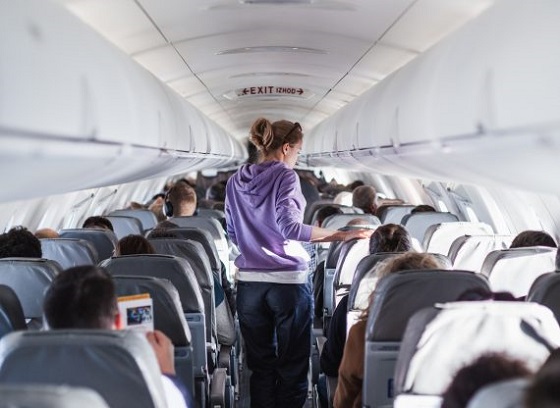
New passenger compensation rules under review could end up harming passengers as well as the country’s aviation sector by forcing airlines to pay for delays and cancellations beyond their control, warns a new report published this morning by the MEI.
“Air travel in Canada is already unaffordable and inaccessible,” says Gabriel Giguère, senior public policy analyst at the MEI. “New rules that force airlines to cover costs they can’t control would only make a bad situation worse.”
Introduced in 2023 by then-Transport Minister Omar Alghabra, the proposed amendment to the Air Passenger Protection Regulations would make airlines liable for compensation in all cases except those deemed “exceptional.” Under the current rules, compensation applies only when the airline is directly responsible for the disruption.
If adopted, the new framework would require Canadian airlines to pay at least $400 per passenger for any “unexceptional” cancellation or delay exceeding three hours, regardless of fault. Moreover, the definition of “exceptional circumstances” remains vague and incomplete, creating regulatory uncertainty.
“A presumed-guilty approach could upend airline operations,” notes Mr. Giguère. “Reversing the burden of proof introduces another layer of bureaucracy and litigation, which are costs that will inevitably be passed on to consumers.”
The Canadian Transportation Agency estimates that these changes would impose over $512 million in additional costs on the industry over ten years, leading to higher ticket prices and potentially reducing regional air service.
Canadians already pay some of the highest airfares in the world, largely due to government-imposed fees. Passengers directly cover the Air Travellers Security Charge—$9.94 per domestic flight and $34.42 per international flight—and indirectly pay airport rent through Airport Improvement Fees included on every ticket.
In 2024 alone, airport authorities remitted a record $494.8 million in rent to the federal government, $75.6 million more than the previous year and 68 per cent higher than a decade earlier.
“This new regulation risks being the final blow to regional air travel,” warns Mr. Giguère. “Routes connecting smaller communities will be the first to disappear as costs rise and they become less profitable.”
For instance, a three-hour and one minute delay on a Montreal–Saguenay flight with 85 passengers would cost an airline roughly $33,000 in compensation. It would take approximately 61 incident-free return flights to recoup that cost.
Regional air service has already declined by 34 per cent since 2019, and the added burden of this proposed regulation could further reduce connectivity within Canada. It would also hurt Canadian airlines’ competitiveness relative to U.S. carriers operating out of airports just south of the border, whose passengers already enjoy lower fares.
“If the federal government truly wants to make air travel more affordable,” says Mr. Giguère, “it should start by cutting its own excessive fees instead of scapegoating airlines for political gain.”
You can read the Economic Note here.
* * *
The MEI is an independent public policy think tank with offices in Montreal, Ottawa, and Calgary. Through its publications, media appearances, and advisory services to policymakers, the MEI stimulates public policy debate and reforms based on sound economics and entrepreneurship.
Business
Looming Air Canada strike highlights need for more competition in the air
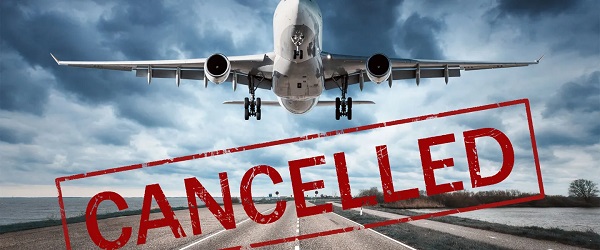
From the Fraser Institute
By Alex Whalen and Jake Fuss
Air travelers in Canada are facing a major disruption as Air Canada’s flight attendants threaten strike action. Air Canada says the strike could affect 130,000 passengers per day from coast to coast.
Currently, two airlines control between roughly half and three quarters of all air travel at Canada’s major airports. When either Air Canada or WestJet face a disruption, a large share of Canada’s overall air traffic is affected. In recent polls, a majority of Canadians have said they feel like Canada’s system of air travel is “broken”. Passengers experiencing hardship should cheer for more competition in Canada’s airline industry.
Increased competition has multiple benefits. When one airline inevitably faces a disruption, passengers would have more options to book with other carriers. Competition also tends to lead to lower prices and better service across the board for the customer, as power shifts away from the supplier and toward the consumer.
Unfortunately, Canada’s skies are largely sealed off from competition.
Due to restrictive federal rules known as “cabotage”, foreign airlines may fly to Canadian airports, but they cannot operate routes exclusively within Canada. For example, a foreign airline such as Delta can fly from New York to Toronto, but cannot then fly from Toronto to Montreal. This policy limits choice and competition within Canada.
In contrast, the European Union removed cabotage restrictions for member-states in the 1990s. The result? More competition (including from new low-cost carriers such as Ryanair), a 34 per cent decline in ticket prices (adjusted for inflation), more cross-border routes, and greater flight frequencies. The entry of new low-cost carriers alone helped lower airfares by 20 per cent.
But new entrants into the industry, including low-cost carriers, face significant barriers to entry in Canada, with foreign ownership restrictions compounding Canada’s competition problem. Currently, the Canada Transportation Act caps foreign ownership of Canadian airlines at 49 percent, and no individual foreign investor can own more than 25 percent of the voting shares.
Starting a new airline is obviously a big undertaking, in part because of the large amounts of capital required to acquire a fleet of airplanes. These rules limit the ability of new entrants to raise the necessary investment capital to compete in the Canadian market.
Loosening these restrictions was recently recommended by Canada’s Competition Bureau, which had been tasked with studying the dismal state of competition in Canada’s airline sector. Earlier this year, we authored a study published by the Fraser Institute which reviewed international best practices in airline policy. Based on this review, we recommended Canada remove foreign ownership restrictions, among numerous other recommendations where Canada is offside with peer countries, including the need for lower taxes and fees, changes to Canada’s airport ownership structure, and a more competitive regulatory burden.
The looming Air Canada strike is just the latest in a long list of regular disruptions faced by Canadian air travelers. While such disruptions may never be fully eliminated, government policy is making the situation worse than it needs to be. Cabotage and foreign ownership restrictions should be removed to provide consumers greater choice when it comes to air travel.
-
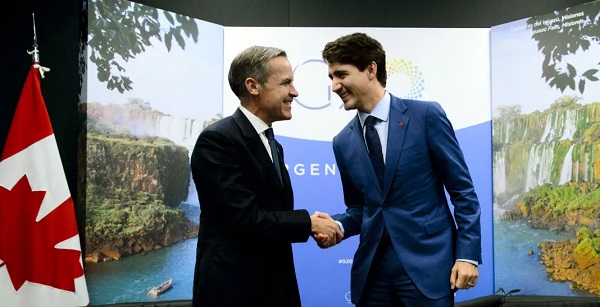
 Carbon Tax2 days ago
Carbon Tax2 days agoCarney fails to undo Trudeau’s devastating energy policies
-
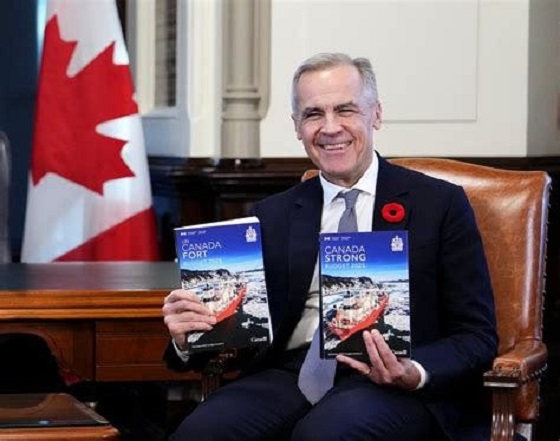
 Business2 days ago
Business2 days agoBudget 2025: Ottawa Fakes a Pivot and Still Spends Like Trudeau
-

 Health2 days ago
Health2 days agoTens of thousands are dying on waiting lists following decades of media reluctance to debate healthcare
-

 Opinion1 day ago
Opinion1 day agoLandmark 2025 Study Says Near-Death Experiences Can’t Be Explained Away
-

 International9 hours ago
International9 hours ago“The Largest Funder of Al-Shabaab Is the Minnesota Taxpayer”
-

 Focal Points1 day ago
Focal Points1 day agoSTUDY: TikTok, Instagram, and YouTube Shorts Induce Measurable “Brain Rot”
-

 Alberta11 hours ago
Alberta11 hours agoPremier Smith explains how private clinics will be introduced in Alberta
-
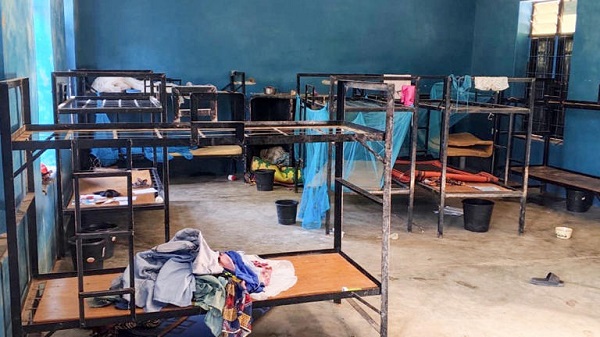
 International10 hours ago
International10 hours ago50 of the 315 students and 12 staff abducted from Catholic school in Nigeria last week have escaped












